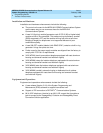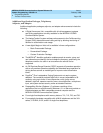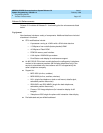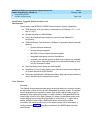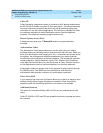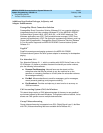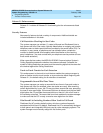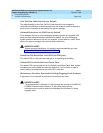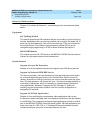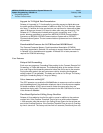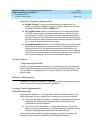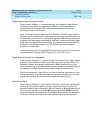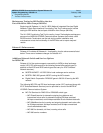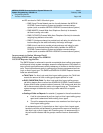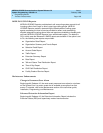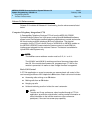
MERLIN LEGEND Communications System Release 6.0
System Programming
555-660-111
Issue 1
February 1998
Programming Basics
Page 1-63Product Enhancements
1
Release 4.0 Enhancements 1
Release 4.0 includes all Release 3.1 functionality plus the enhancements listed
below:
Equipment 1
016 Tip/Ring Module 1
This module supports the 200-extension dial plan by providing 16 ports for tip/ring
devices. Applications that use a tip/ring interface can connect to this board. All 16
ports can ring simultaneously. Four touch-tone receivers (TTRs) are included on
the module as well. The module’s ringing frequency (default 20 Hz) can be
changed through programming to 25 Hz for those locations that require it.
800 NI-BRI Module 1
This module connects NI-1 BRI trunks to the MERLIN LEGEND Communications
System for high-speed data and video transmission.
System Features 1
Support for up to 200 Extensions 1
Release 4.0 has an expanded dial plan that supports up to 200 tip/ring devices.
Support for National ISDN BRI Service 1
This service provides a low-cost alternative to loop-start and ground-start trunks
for voice and digital data connectivity to the Central Office. Each of the two B
(bearer)-channels on a BRI line can carry one voice or one data call at any given
time. The data speeds on a B-channel are up to 14.4 kbps for analog data and up
to 64 kbps for digital data, which is necessary for videoconferencing and other
video applications. Release 4.0 supports the IOC Package “S” (basic call
handling) service configuration and Multi-Line Hunt service configuration on
designated CO switches.
Support for 2B Data Applications 1
Release 4.0 has certified group and desktop video applications that use two
B-channels to make video/data calls from endpoints (extensions) that are enabled
to use 2B Data. The endpoints that support these applications connect to an MLX-
port on the MERLIN LEGEND Communications System. 2B Data applications can
make use of the NI-1 BRI, PRI, or T1 Switched 56 network interfaces to make
outside connections using one or two data channels at a time.



